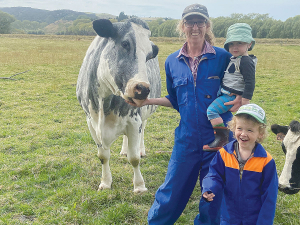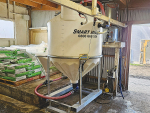He told a recent Small Milk and Supply Herds (SMASH) conference that if farmers imagined themselves in the role of a cow they would spot problems in the dairy shed and make modifications that would save time and money and make milking a more pleasant task for cow and milker.
He says the first thing to consider about a cow is her feet: she’s a bit unstable and the pressure on her feet is high. She will be very sensitive to anything likely to affect her walking.
“When cows walk they normally put their back foot in the same place as their front foot; you can see this on video. If cows are under stress or pressure, that second or back foot doesn’t land where the front foot was and you know something is wrong. The same applies when cows are in the rain: they shorten their stepping, and anything you can do to make them feel safe is good.”
Eden says generally cows don’t feel safe on ramps because they can slip. When humans walk up a ramp we use hands to hold a rail, but cows can’t.
“Try keeping your arms folded and walking up a slippery slope. Going down is even worse because you know you could land on your tailbone. Put steps in instead of ramps. Cows can skid on even quite gentle slopes or just feel unsafe.”
The other issue he noted was the need to have the concrete surfaces of yards rough enough to prevent cows from slipping. These need to be really rough, not just scuffed over.
The dairy shed itself needs to be looked at closely, says Eden. It’s easy to see signs of cows being unhappy at going into a shed. “For example if the head gate angle is incorrect then the first cow is going to be uncomfortable. She knows that after having entered the first time and will tend to wait there for another cow to go past her and half block the entrance in the process. I’ve seen this big, old cow that doesn’t fit up front wait and wait until some little rat of a cow goes past and then she’ll go in.”
Pipes and rails inside a shed need to be geared for cow comfort, says Eden. He has seen a cow with her hip bone broken because she’s been pushed against a vertical rail. He says care also needs to be taken when determining the height at which breast rails are positioned.















